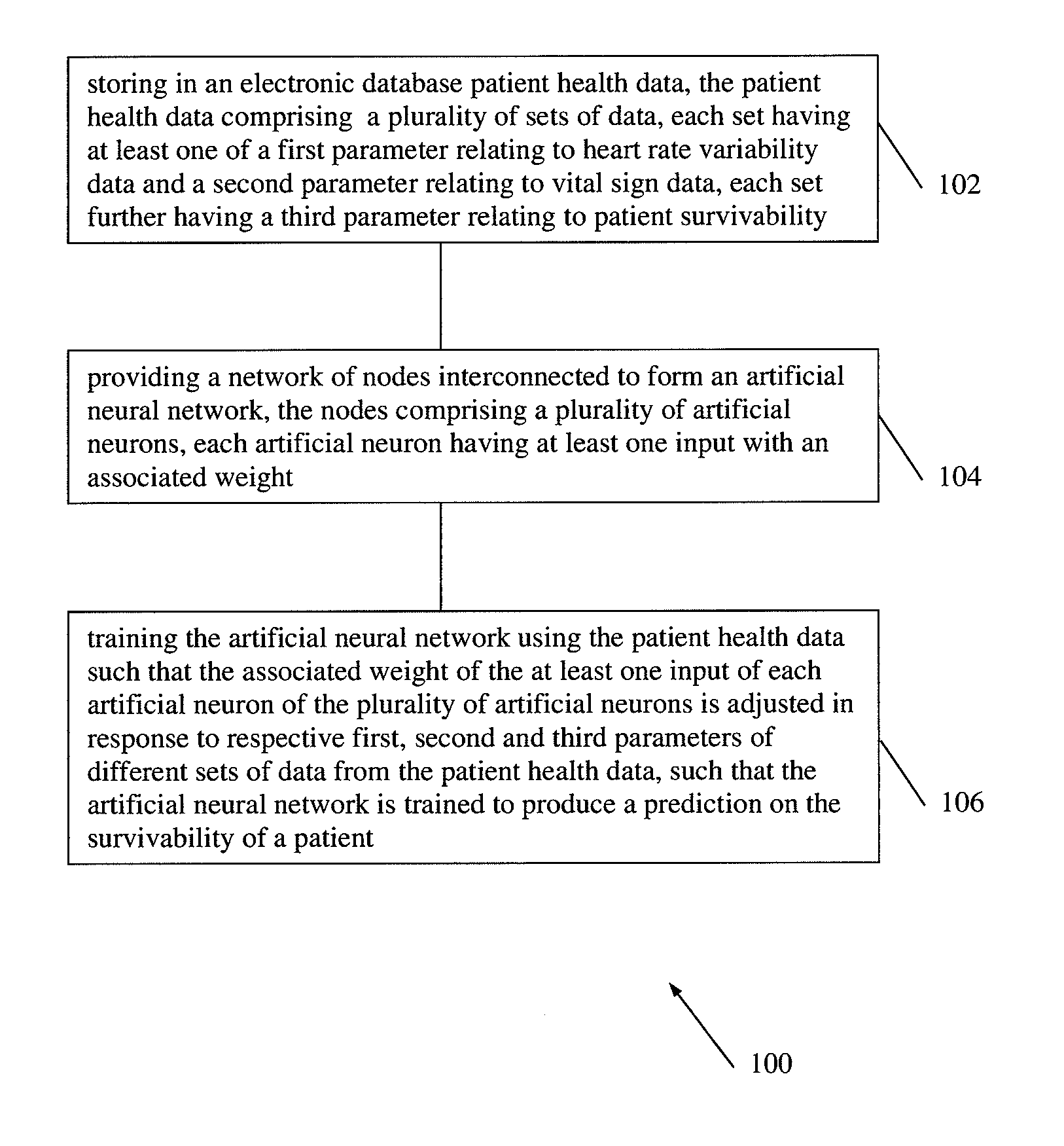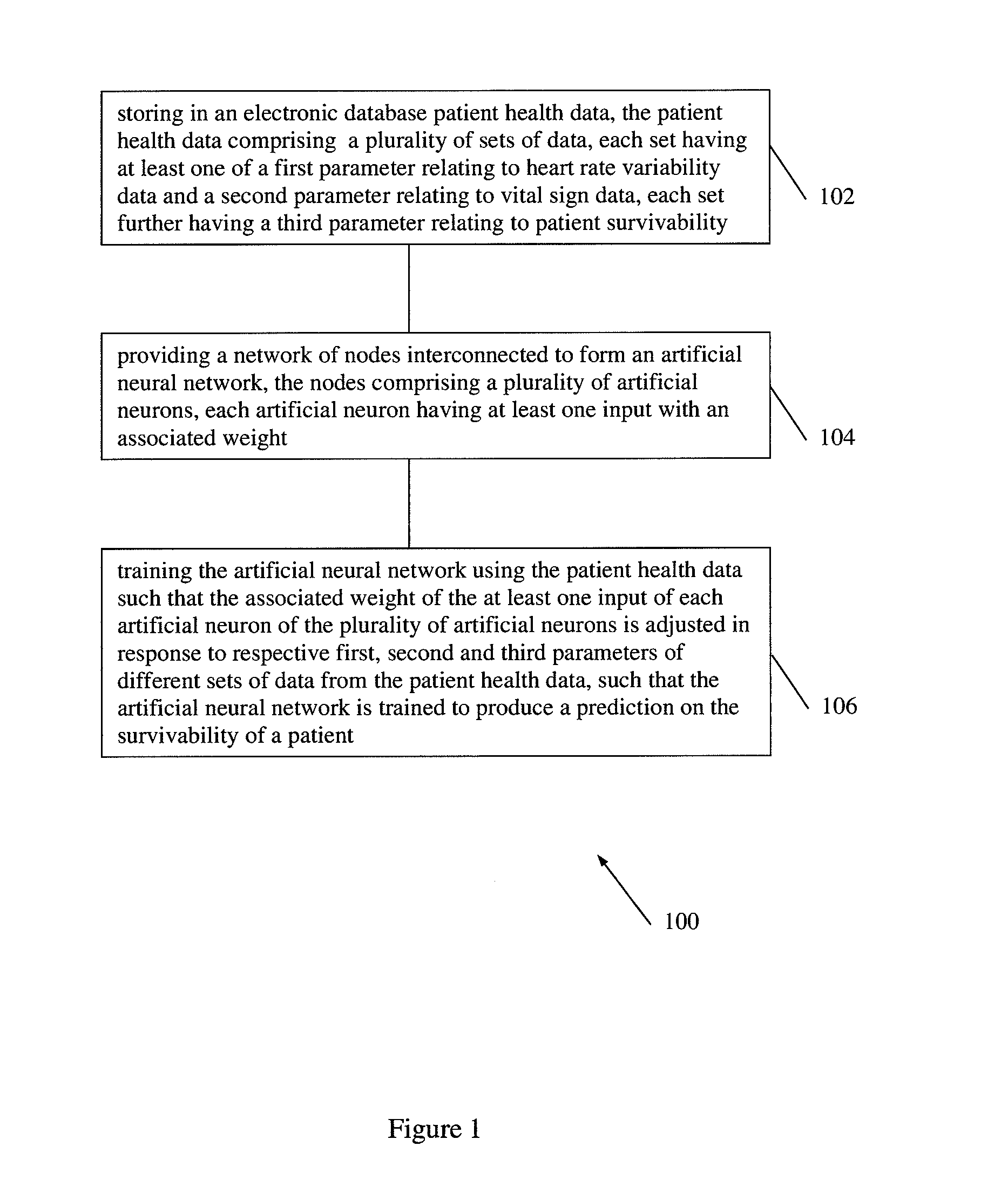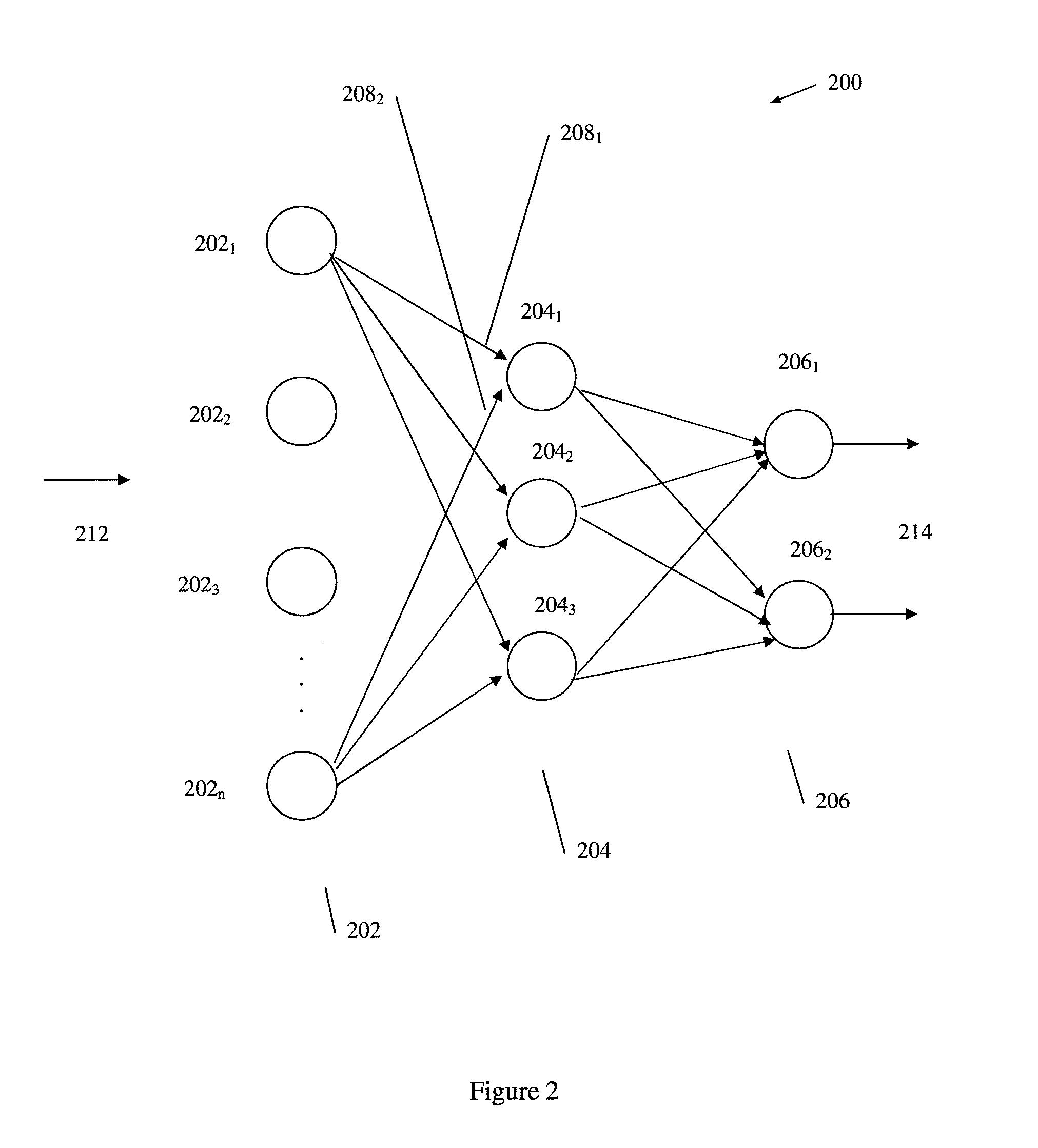Method of predicting acute cardiopulmonary events and survivability of a patient
a cardiopulmonary event and patient technology, applied in the field of patient survivability and patient survivability prediction, can solve the problems of not being convenient and efficient for clinicians, clinical ‘vital signs’ such as heart rate, respiratory rate, blood pressure, temperature and pulse oximetry have not been shown to correlate well with short or long-term clinical outcomes
- Summary
- Abstract
- Description
- Claims
- Application Information
AI Technical Summary
Benefits of technology
Problems solved by technology
Method used
Image
Examples
Embodiment Construction
ws a flow chart used by a validation system.
[0034]FIGS. 23, 24 and 25 respectively show classification results using vital signs, HRV measures, and combined features.
[0035]FIG. 26 shows results from using a different number of selected segments using combined features.
[0036]FIG. 27 shows four different predictive strategies.
[0037]FIG. 28 shows results from different predictive strategies using combined features.
[0038]FIG. 29 shows classification results from using vital signs, HRV measures, and combined features.
[0039]FIGS. 30, 31 and 32 depict the performances of extreme learning machine (ELM) in terms of different number of hidden nodes.
[0040]FIG. 33 shows results from different predictive strategies using combined features.
[0041]FIG. 34 shows an embodiment of the invention in a wearable medical device.
DETAILED DESCRIPTION
[0042]According to aspects of embodiments, a system is able to reliably predict acute cardiopulmonary medical events that, left untreated, would with a high like...
PUM
 Login to View More
Login to View More Abstract
Description
Claims
Application Information
 Login to View More
Login to View More - R&D
- Intellectual Property
- Life Sciences
- Materials
- Tech Scout
- Unparalleled Data Quality
- Higher Quality Content
- 60% Fewer Hallucinations
Browse by: Latest US Patents, China's latest patents, Technical Efficacy Thesaurus, Application Domain, Technology Topic, Popular Technical Reports.
© 2025 PatSnap. All rights reserved.Legal|Privacy policy|Modern Slavery Act Transparency Statement|Sitemap|About US| Contact US: help@patsnap.com



